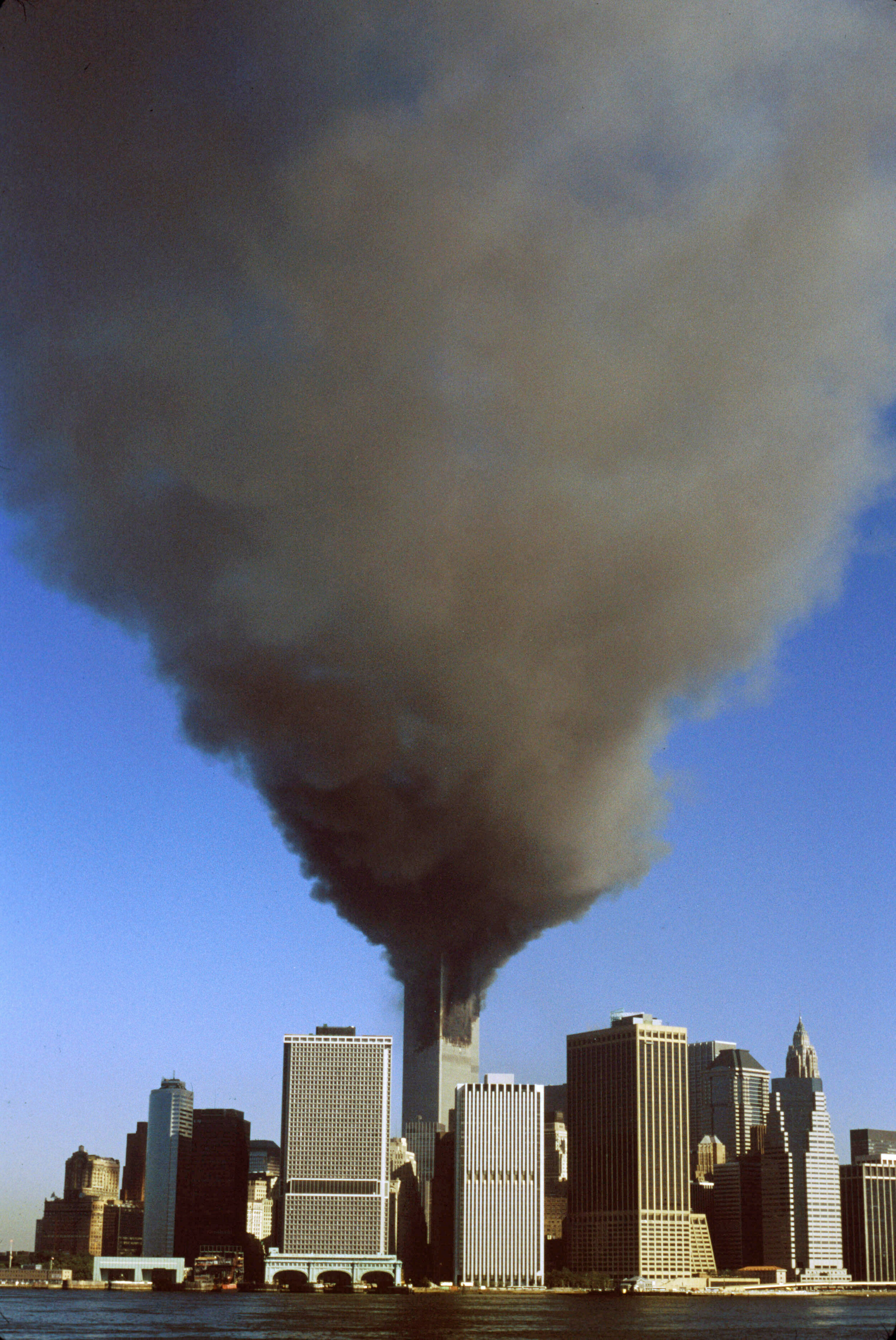9/11 on Pier 9B
/It’s funny how life works sometimes. 7 years ago, two planes flew into the WorldTradeCenter, and 7 years ago I snuck into the Red Hook containerport to make photos of the burning buildings. 7 years later, I’m living on a retired oil tanker on the same pier from which I made a widely-published photo of the disaster (and Homeland Security funds have since built a new port fence that makes such sneaking-in impossible.)
I’ve been interviewed and awarded aplenty for my photojournalism work at ground zero; but up until now, I have refrained from writing anything about 9/11. What I’d like to do here is acknowledge the work of others who I think deserve appreciation.
First, starting with the personal: Many thanks and much credit should go to Debby Romano. She’d only steered a boat one time before 9/11. That was a few days before 9/11, when I was shooting Robert Buchet bagpiping on the tug Amy Moran at dawn for a long term National Geographic project. I told Debby to hold a course right off the tug’s beam and just outside the barge wake. She did it, and that ain’t easy in a 26’ runabout. I told her she was a natural.
When 9/11 happened, I called her boss Greg O’Connell, baron of Red Hook, and asked if Debby could get off work to join me on my boat going to the WorldTradeCenter. The BrooklynBridge was already closed, I had tried to bike over it after sneaking into the port. He said yes. Debby and I watched the 2nd tower go down from the water, and we got involved in getting one cop from shore to the Sandy Hook Pilots boat just off the Battery.
As I left her in North Cove and handed her my bag of exposed film in case I didn’t get out, I told her “When you dock, remember that boats keep moving after you decelerate more than cars do. Take that into account and also the wind; and so long as you approach the dock very slowly, you can’t damage anything, and good luck.”
With only that for experience and instructions, she got the boat home. She reported that, on the way to Red Hook, she passed a slew of tugboats steaming out of the Kill Van Kill -- some 20 of them roaring towards ground zero. More on them later.
I shot for several hours at ground zero, and went to go as I felt bad vibes (building 7 collapsed shortly thereafter). I spotted the tug Nancy Moran on the seawall and her engineer Gina Sikes, who I knew. Gina has since passed away, but still I’d like to thank Gina and that crew for their assistance in getting me out and for being friendly faces on a dark day.
I reached L&I Color lab in the photo district and had the weird good luck to have Kathy Ryan, photo editor of the New York Times Magazine, walk in as soon as my developed slides hit the light table. I needed the bag of unexposed film, the bag I’d left with Debby, and I’d like to thank Richard Dennis and other Red Hook friends who tried to get to Manhattan in my powerboat. The Coast Guard turned them back, so they gave the film to Joe Martin, a Red Hook townie who has since been pushed out of here by gentrification; and he biked over one of the bridges - after attempting several - to deliver the film.
As to the bigger picture, I’d like to acknowledge the tremendous role of the marine industry in 9/11. Their contribution on that day, and for the weeks and months thereafter, has not been duly registered, analyzed nor appreciated.
When Debby and I approached the Battery, thousands of citizens were crammed along the seawall. As I left ground zero on the tug Nancy Moran only 2 or 3 hours later, there were none; all evacuated by boat in what was a spontaneous, civilian-initiated operation. It began before the Coast Guard asked for it. Tugs, ferries, excursion boats, pilot boats, police and park police boats, historic vessels, dinner boats -- all sectors of the marine industry on all sorts and sizes of craft showed up and got people moving.
They sorted themselves out by size, the shallow draft vessels took people to locations with shallow waters. Boat crew sprayed bedsheets with destination signs; they got out torches and cut the (stupidly) designed fences of Battery Park City that had no removal sections nor cleats or bollards for boats to tie to.
Bedsheet destination on the front of this tug
Tugs and then barges brought fuel for fire trucks and generators, and fresh water. Boats brought food from the Jersey shore. I remember standing knee deep in rubble and water on West Street and Liberty within an hour of the second tower collapse, shortly after a firefighter shared their grim estimate “we’ve lost 340 men,” to see a college kid coming out of North Cove pushing a shopping cart with snack bars, Gatorade and water. Hats off to the boats that brought that all over.
Right after these firefighters learned how many had been killed
As the “rescue” period with its hope of survivors eroded into the “recovery” period with its goal of finding body parts, the marine industry soldiered on removing the rubble. Floating cranes unloaded trucks and loaded barges. Tugs took the loaded barges away. The larger steel pieces left from Pier 11 on the East River. The smaller stuff, which was really none too small, left from Pier 25 in Tribeca.
Mike Mazzei, videographer and diver who day-jobbed as a dockbuilder, put up a series of banners at Pier 25 documenting the tonnage and number of barge loads they removed. He shot the job and made a video.
M ike mazzei paid for this banner himself since the media and officials were not giving the marine bargeport any credit for their work
Still, most of the media drove past the pier to do stories from the pile, then the pit, from firehouses, from city hall, stories about steelworkers, medics, cops, shrinks, priests and even photographers. Much of that media continues to chime that the working waterfront is dead. (A special Broken Record Award goes to the New York Times for reiterating that old chestnut.) Is the working waterfront dead, or is the media just blind?
Other media ignored the significant maritime story even when they had it. National Geographic considered running my tugboat project, with it’s unpublished content about the 9/11 marine evacuation, on the first anniversary of the attacks.The Director of Photography decided not to “since we have two other water stories in the same issue.” So, rather than doing a water-themed issue, they put meerkats on the cover — I got many an angry call from tugboat captains on that one.They never published the tug work and held on to it so long it was un-publishable anywhere else. My apologies, fellas; but you can see why I left the media biz.
But back to ground zero: When the politicians got around to concocting a ceremony for the last piece of steel removed, they didn’t include a tug or barge in the choreography. They put a huge beam on a truck and slowly rolled it out of Manhattan.The Pier 25 rubble removal crew watched as the departure ceremony started north of them.
last column ceremony on 5/30/02. This column is now exhibited in the 9/11 museum at ground zero
Why is this all important?
Everyone should get their due.
We should understand what really happened.
We should be prepared for the next one.
We should understand where we live (an archipelago) and build to suit.
There’s been a whole lot of waterfront revitalization going on, leading to a rash of newfangled piers without cleats, piers too weak to dock a tug and barge, piers designed for pedestrians-only, silly piers whose planners want them designated “water dependant.”
We shouldn’t be doing that.
Not only because of disaster preparedness, but because the seam between water and land should be a porous membrane with people and things coming and going across it.Not only would that make the most useful (or what 2008 plannerspeak calls “green and sustainable”) waterfront, it would also make the most interesting and fun one.
And with that, I leave you all to your prayers and memories and your own rituals of thanks and acknowledgment. 9/11 was a public episode, but many of us have private ways of handling it. Today, this happened to be mine.
More on the maritime role in 9/11:
List of Boats involved in Manhattan evacuation on 9/11
Interviews associated with South Street Seaport exhibit on the topic
Video Merchant Marine heroes of 9/11 by MARAD (US Maritime Administration)
Interviews with local tug crews on www.carolinasalguero.com see section “Maritime 9/11” under section WTC. Slow to load – it’s an old Flash site. (This site is temporarily down and version from Archive.org is here.)
MagRack3 video profile of Carolina Salguero. 2001 On the morning of September 11, 2001
Update: in 2011, I curated PortSide NewYork’s exhibit the Mariners’ Response to 9/11.











